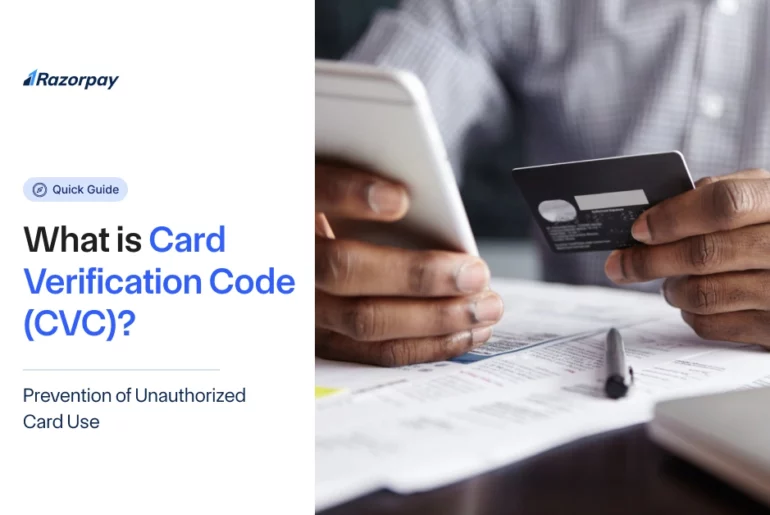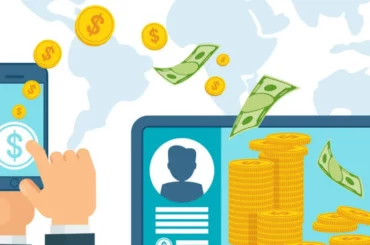The Card Verification Code (CVC) is a security feature found on credit and debit cards. This is designed to protect against fraudulent activities during online or phone transactions. This blog explores what is CVC, its functionality, and how it enhances transaction security.
Table of Contents
Understanding Card Verification Code (CVC)
The CVC is a three- or four-digit number printed on your credit card or debit card. It acts as an extra layer of security to verify that you have the physical card when making a purchase. For Visa and MasterCard, you can find the CVC on the back of your card near the signature strip. American Express cards have a four-digit number printed on the front.
The main purpose of the CVC is to prevent unauthorised transactions when you shop online or over the phone. Merchants ask for this code to ensure that even if someone steals your card details, they cannot complete a transaction without seeing your physical card. This reduces your risk of fraud since the CVC is not stored in merchant databases and cannot be easily obtained through data breaches.
What is the Difference Between CVC, CVV, and CID?
CVV (Card Verification Value) is used by Visa and MasterCard interchangeably with CVC.
CVC (Card Verification Code) is often used by payment networks to describe the same security features as CVV.
CID (Card Identification Number) is a four-digit code used by American Express cards.
Here’s a quick comparison:
|
Term |
Full Form |
Card Type |
Location |
|---|---|---|---|
|
CVV |
Card Verification Value |
Visa, MasterCard |
Back of the card (3 digits) |
|
CVC |
Card Verification Code |
Visa, MasterCard |
Back of the card (3 digits) |
|
CID |
Card Identification Number |
American Express |
Front of the card (4 digits) |
Importance of the CVC
The CVC plays a crucial role in securing your online transactions by verifying that only you can make purchases with your card. During online transactions, providing your valid CVC ensures that even if someone has stolen your card number or expiration date, they cannot complete a purchase without this code.
You must protect your CVC from unauthorised access by never sharing it or storing it insecurely online.
How Does the CVC Work?
When you make an online purchase, you need to enter your card number, expiration date, and CVC. Merchants verify this information against records held by card networks to confirm you are the rightful cardholder. he CVC you enter is matched with data stored securely by your issuing bank but not shared with merchants or stored in their databases.
Your CVC acts as part of the transaction authorisation process. This ensures that only legitimate transactions using your card are approved. It also ensures added protection against data breaches.
Examples of CVC
For Visa or MasterCard, your CVC is a three-digit code on the back near the signature panel. For American Express, your CVC is a four-digit code printed on the front.
When you purchase items online, you must enter your name, card details, and CVC to complete payment securely.
Tips for Protecting Your CVC
Never share your CVC with anyone who contacts you, even if they claim to be from your bank. Avoid saving your card details on websites unless you fully trust them. Check your bank statements regularly for unauthorised transactions.
If you suspect your card or CVC on card has been compromised, contact your bank immediately. Report lost or stolen cards promptly. Monitor your account for unusual activity.
Always ensure that you use secure websites for online transactions and avoid sharing sensitive information over unsecured networks.
Do You Need a Verification Code?
The CVC is essential for your online transactions because it provides an extra layer of security that protects both you and merchants from fraud. By requiring this code for card-not-present transactions, merchants can verify that you have physical access to your card. Without a valid CVC, most of your online purchases cannot be completed securely.
Conclusion
CVC is a vital component in ensuring secure credit and debit card transactions. It prevents payment fraud by verifying your card ownership during online or phone purchases while safeguarding your sensitive financial information. It plays a critical role in preventing unauthorised use during card-not-present scenarios.
Frequently Asked Questions
1. Where is my card verification code?
Your card verification number is on the back of your card. It’s the last 3-4 digits in the signature area.
2. Can I change my CVC?
No. The CVC is fixed for each card. You need a new card to get a new CVC.
3. What is a 6-digit verification code?
It’s a security code sent by SMS or email. It helps confirm your identity when logging in or making transactions.
4. What is a 4-digit verification code?
Similar to a 6-digit code, it’s a shorter security measure sent by text or email to verify who you are.
5. How does the CVC help prevent fraud?
It adds security for online or phone purchases. It proves you have the physical card when the merchant can’t see it.
6. Can a merchant store my CVC for future transactions?
No. Payment security rules forbid merchants from storing your CVC.
7. Why is my transaction failing even though my CVC is correct?
Your card might lack funds. Other card details could be wrong. You might be over a spending limit. The payment system could have errors. Your card might be flagged for unusual activity.
8. Can I make recurring payments without entering my CVC every time?
Yes. When you set up recurring payments, the payment system securely stores your card information. The CVC is only needed for the first transaction.


